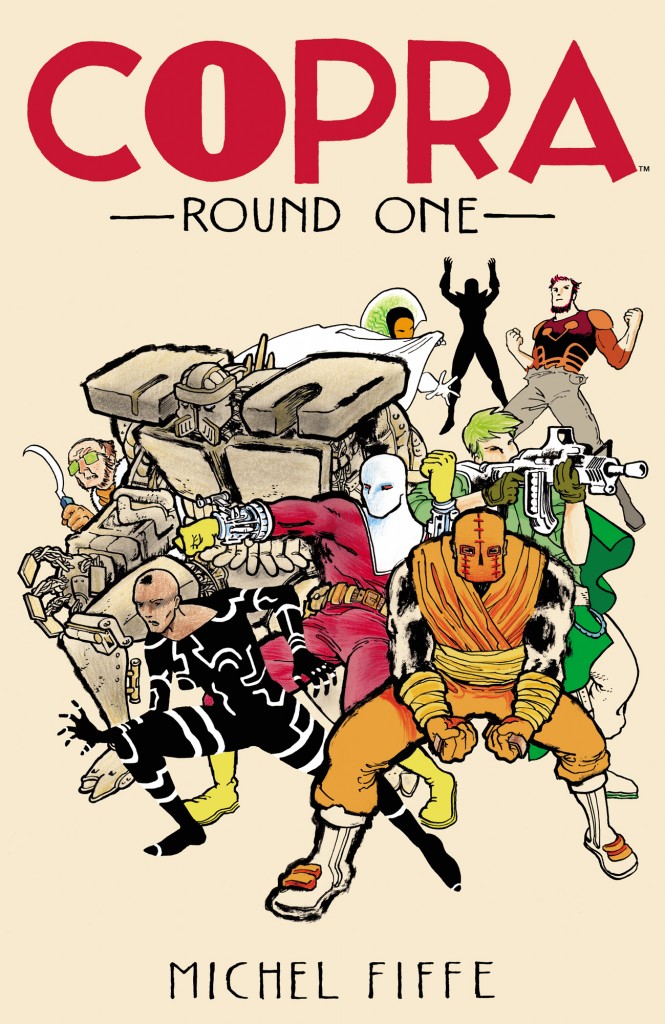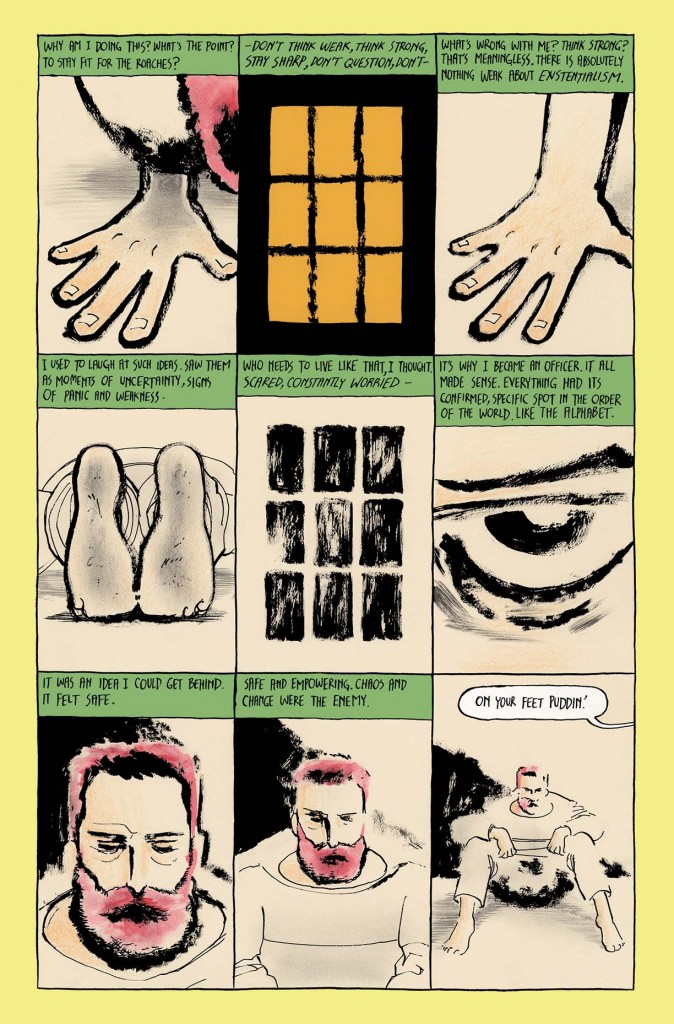For me, COPRA is the one of the few superhero comics that really matter.
A few years ago, I was at a point where I had basically given up on everything produced within the arena of the “Big Two”. Sure, I enjoyed the occasional Grant Morrison comic when they would rear their head, but for the most part I had lost the exhilaration I used to get when I would read the adventures of my favorite costumed adventurers. Then, in the midst of a discussion of Jack Kirby and John Ostrander, a good friend floated along the idea that I would find great delight in reading the self-published wonder that is Michel Fiffe‘s riff on Ostrander’s biggest legacy work. What I found was a comic that embraced everything I loved about superheroes and the ideas of some of their most iconic creators, and then spun them off in wholly exciting and unpredictable directions. The jubilation that I feel whenever I crack open a new issue of COPRA is likely on par with what readers in the 70’s felt when a new Fourth World installment was released, or their counterparts in the 80’s when the aforementioned Suicide Squad and Watchmen were being unfurled upon an unsuspecting public.
COPRA reminds me of the actual potential of this side of the medium, and it’s a book that I wish everyone had their hands on. It is superhero comics at their absolute best.
While at HeroesCon, I had the opportunity to sit down with Fiffe to discuss what’s coming up in his lauded series along with other points of interest that encircle self-publishing and the day to day process of creating the issues in which he is responsible for every facet, including their mailing to subscribers. Here is Part 1 of our discussion:
When you conceived of COPRA, what was the impetus to say: “I’m going to self-publish this and do everything myself” vs. pitching it to a publisher like Image or Boom! or any other publisher that might have found a home for it?
I find the pitching process to be rather exhaustive and time consuming. I know it well, I’ve done it many times. It’s such a slow process getting a book green-lit and that’s not the nature of what I wanted to do with COPRA. It had to exist almost immediately. I don’t have a committee to answer to and that’s appealing to me. I’m not comfortable giving that power to whatever company.
And you did a lot of pitching before that you said?
Tons of pitching, tons of submissions, I’ve done pretty much everything I could think of to do to get in through the door. I’ve got some published works as a result, but nothing really satisfying, or that I really felt confident about. So, self-publishing, once I started doing that, that’s when I felt like I was creating comics on my own terms. COPRA is a natural extension of that, especially when I started giving myself a monthly schedule, mimicking the schedule of mainstream comics. For me, that’s the interesting dichotomy of it, where I’m harnessing this kind of “old-school” rigorous schedule to fit my independent needs.
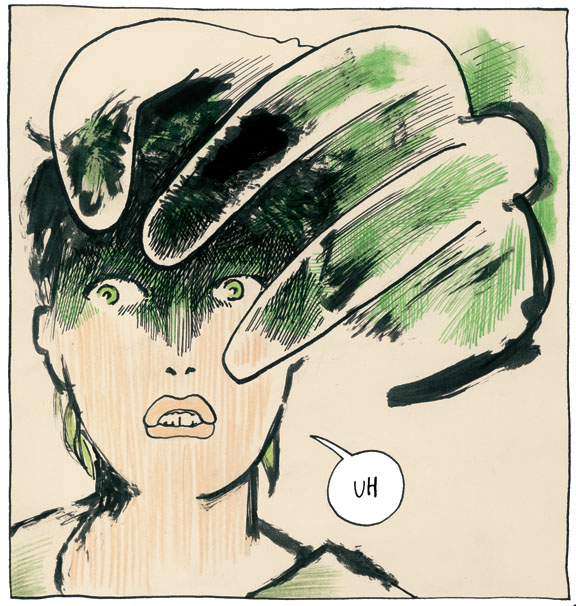
Well, motivation is always the biggest hurdle to overcome, especially given an unrelenting schedule. I have to wake up every day and treat this like a job, because it IS my job, it is my full-time job. I have to get it done somehow, I can’t wait for the muse to strike. I have to get an issue done a month, or as close as possible. But as far as challenges in not having the marketing muscle of other companies? I’d rather stand apart from the wall of noise. How many press releases does anyone really read, anyway?
Your comics, at least in their monthly form, are only available on your Etsy page and I noticed that you share that with your significant other, I think I saw some nice craft jewelry I think?
Yeah, Kat Roberts sells all kinds of stuff, zines, handmade purses, prints. I totally piggy-backed off her store on Etsy. That was a platform I was familiar with, so when I started publishing Zegas (Fiffe’s first self-published comic) I didn’t have a place to sell it from, except conventions and maybe the occasional store that would take a risk on it. Etsy allowed me to slowly build up my readership. By the time I got to COPRA, there was a significant amount of people that were interested in the stuff I did and that made it easier for me to move forward.
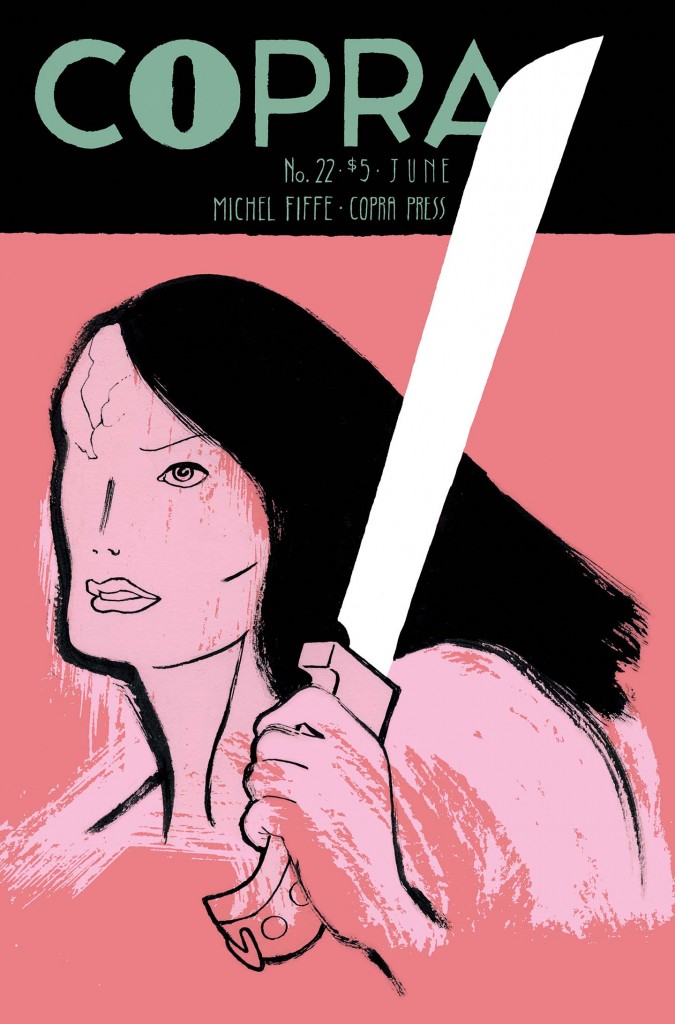
That’s the one that just came out.
Good, let’s use that one as an example, if you’re working on Issue 22, what is your step by step? Do you script first and then directly move into the illustration phase? Do you create thumbnails? How do you piece your typical issue together?
It always changes, but the constant thing is that I always map out the story, page by page, and then I script it loosely. Then I start penciling loosely with the first draft in mind. The real work portion of the process begins when I start refining the script while inking and sometimes hand lettering. That’s when it all starts coming together. But generally I have a very loose plan in mind per issue. It’s equal parts organic and strict. I just have to get a number of pages done every day, that’s basically my main objective.
What’s your average rate right now?
Comfortably, I’d say about two pages a day, complete with full color. And that may range, sometimes I may get three, sometimes just half of a page, it just depends. And then you also have to consider the managerial aspect of it after the book is done. I have to get it shipped out to readers and stores and that’s definitely a job in of itself.
Was there ever a page or spread or a panel layout that was really hard to crack? Was there any particular example where you just said “oh my god, what am I doing with this thing?”
Every page is like that, but I try to make it work somehow. I have to bring that blank page to life somehow. But the trick is to not think about it too much, because if I over-think it – which is my natural inclination – it kills it. You can get caught up in that and then nothing exists, there are no results. I strive for perfection, but being my own worst critic, I have to be real careful to not crush my gut instinct.
You’re a real master of negative space, and I read an issue and think “damn, Fiffe really knows how to use that white”. I think that’s a rare talent, and I’m not trying to kiss ass, but when I read through recent issues it’s hard to not notice how much your craft continues to grow every single issue. I’m floored by the way you use this stuff.
Thanks, man!
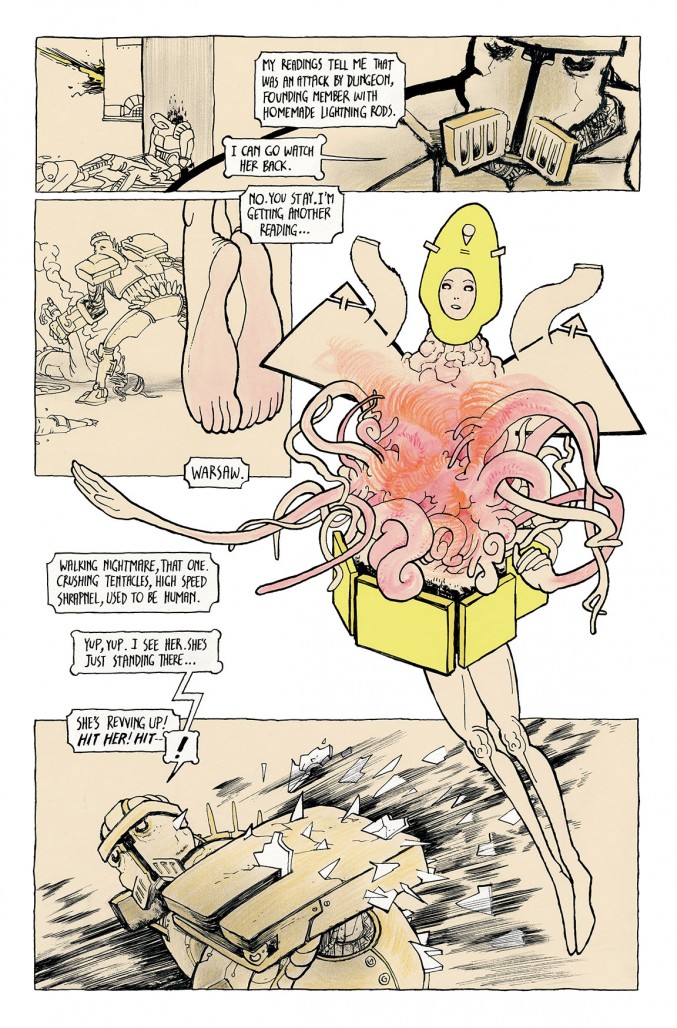
Right, it’s all splintered.
Yeah, I almost have a hard time keeping track.
I should map it out.
I would love that, if you would put a thing at the end of each issue with the full cast.
I’ve been thinking about that, actually.
That would be awesome, and I’ll take full credit if it happens. But when you were conceiving of your core cast, there are obviously analogous elements to Ostrander’s Suicide Squad.
Absolutely!
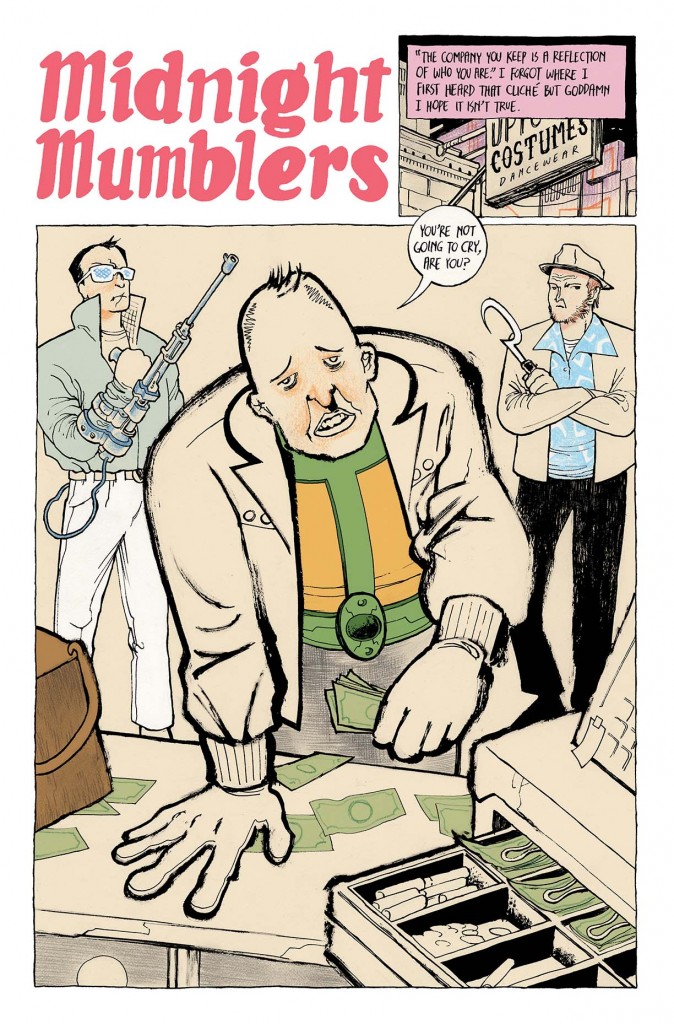
When I initially set out to do this comic, I put myself in the mindset of: “what if a publisher hired me to take over a title, and gave me complete freedom”, which would never happen in the current landscape. So using that fantasy to guide me, I took the Dirty Dozen-esque concept, which has been around for a while in many different forms, and I used it as a blueprint to work from. I wanted a world I could really sink my teeth into month in and month out. I wanted to make something that was serialized, that maximized the nature of the single issue, I wanted to build a place that made it easier for me to explore all my interests. The analogous aspect of it… I was reluctant at first, but I had forgotten that some of my favorite comics are analogous, too, some more blatant than the others.
Are there any examples you can cite? At least of the ones that fall favorably with you?
I mean, the Fantastic Four included a Kirby monster, Plastic Man, and Carl Burgos‘ creation as the Challengers of the Unknown… as a response to JLA. Watchmen, Marvelman, Supreme, everything Alan Moore does, basically. That’s no secret. So I moved forward citing those comics, using the current cultural momentum of irreverence to just do whatever I want. Plus, I figured no one’s going to be reading this anyway! We’re talking small press here, not many copies exist. It was liberating.
How far ahead did you map out your story?
Not that far, I did it issue by issue. I also wanted it to feel like a very immediate, raw, I wanted it to be as direct a thing as possible. So, it was really just one or two issues ahead. I mapped out twelve issues with super brief descriptions and that’s all I had to go on. I also wanted to make sure that I could fill twelve issues worth of stories. Luckily it worked out.
Look for Part 2 of our discussion on Sunday, when we discuss the possibility of digital distribution and what readers can expect in upcoming issues of COPRA.
You can purchase recent issues of COPRA at Michel Fiffe and Kat Roberts’ Etsy store, also both of the Round One and Round Two collected editions are available at Bergen Street Press.


